Day 20 :
- Multimedia Systems and Applications
Multimedia Signal Processing
Content Analysis and Processing
Multimedia Communications
Location: Salis-Well

Chair
Robert S Laramee
Swansea University, UK

Co-Chair
Imed Romdhani
Edinburgh Napier University, UK
Session Introduction
Susan Johnston
CEO Select Services Films Inc- & Founder/Director New Media Film Festival, USA
Title: Commerce and engagement for entertainment: The new frontier

Biography:
Susan Johnston is President of award winning Select Services Films, Inc. (DBE) and is Founder/Director of New Media Film Festival. Johnston has a background in the traditional film and TV industry and in recent years as a pioneering new media producer including Stan Lee’s Comikaze Expo panel for Independent Creators, Co-Producing Feature Film Dreams Awake & currently producing the Marvel Comic feature Prey: Origin of the Species. While the Industry was changing from standard definition to HD Johnston produced the 1stseries for mobile, Mini-Bikers the 1st live stream talk show on HD with a Panasonic Varicam and tested the Panasonic DVX100 which led to some changes on the DVX100A and was on the SAG New Media committee in 2003. Editorial board for the Encyclopedia of Computer Graphics and Games, Member-The Caucus New Media Steering Committee, Academy of Television Arts & Sciences New Media Interactive, BMI, SAG/AFTRA, Advisory board member for SET Awards (Entertainment Industry Council), Machinma Expo Judge, Advisory Board for Woodbury University Digital Media Lab and Professor Emeritus in New Media.
Abstract:
Engagement, monetization and technology are the stepping stones of building awareness and longevity of your brand. Interactive experiences over multiple platforms are becoming the norm. Which platforms are best for your content? Which strategies speak to your demographic? Technology has aligned with viewers objectives and curated content continues to gain popularity. There are too many Games and TV programs online to watch them all, but the really good ones can attract major attention. We will discuss how to take your content to the next level. We will share companies successes and failures in this area to learn what they did right and how you can match their success and avoid there failures. In doing so, you will learn how to make your content not only stand out from all the rest but build a loyal following that helps you spread the word to engage the masses.

Biography:
Philip Davies received the award of Doctorate in Theoretical Physics from Birkbeck College, University of London for his work in Quantum Mechanics. His research interests now centre on systems modelling, complex networks, ontologies and knowledge systems. He is a member of the Multimedia Systems Research Group which began as a joint venture between Bournemouth University and Bournemouth and Poole College. He has been involved in Multimedia Conferences since 2009. He has served on all the IARIA Advances in Multimedia Conferences from their inception as Technical Advisory, Panel member and more lately as a member of the Steering Group. He has chaired a number of sessions and published five papers with colleagues in IARIA MMEDIA conferences winning Best Paper Award in Athens 2010 for his joint paper on“Implementation and Evaluation of an Adaptive Multimedia Presentation System with Contextual Supplemental Support Mediaâ€. He was a panellist in the MMEDIA2010 conference and Chair of the closing panel discussion in the MMEDIA 2011 conference in Budapest. He has been the Assistant Director of Higher Education at Bournemouth and Poole College where he was responsible for over 20 undergraduate courses and more than 1000 students. He now works full time at Bournemouth University.
Abstract:
We present a criticism of the present structure of ontologies as used in knowledge classification and indicate that they are not sufficient in their present form to represent the many different valid expressions of a subject knowledge domain. We propose an alternative structure for ontologies replacing the tree structure of ontologies with a richer multi connected complex network which contains the present ontology structure as a projection. We demonstrate how this new multi connected ontology should be represented as an asymmetric probability matrix.
Vijayan K Asari
University of Dayton, USA
Title: Wide area surveillance: Situational awareness for security automation
Time : 11:25-11:50
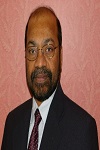
Biography:
Vijayan K Asari is a Professor in Electrical and Computer Engineering and an Endowed Chair in Wide Area Surveillance at the University of Dayton, USA. He is the Director of the Center of Excellence for Computer Vision and Wide Area Surveillance Research at UD. He received his PhD degree in Electrical Engineering from the Indian Institute of Technology, Madras. He holds three patents and has published more than 450 research papers in the areas of image processing and computer vision. He received several teaching, research and advising awards. He is a Senior Member of IEEE and SPIE.
Abstract:
Wide area surveillance refers to an automated monitoring process that involves data acquisition, analysis, and interpretation for understanding object behaviors. Automated surveillance systems are mostly used for military, law enforcement, and commercial applications. Sensors of different types and characteristics in surface-based or aerial-based platforms are used for the acquisition of data of large areas sometimes covering several square miles. Intelligent visual surveillance is becoming more popular in applications such as human identification, activity recognition, behavior analysis, anomaly detection, alarming, etc. Detection, tracking, and identification of moving objects in a wide area surveillance environment have been an active research area in the past few decades. Object motion analysis and interpretation are integral components for activity monitoring and situational awareness. Real-time performance of these data analysis tasks in a very wide field of view is an important need for monitoring in security and law enforcement applications. Although huge strides have been made in the field of computer vision related to technology development for automatic monitoring systems, there is a need for robust algorithms that can perform detections of individuals in a surveillance environment. This is mainly because of certain constraints such as partial occlusions of the body, heavily crowded scenes where people are very close to each other, etc. We present a robust automated system which can detect and identify people by automated face recognition in a surveillance environment and track their actions and activities by a spatio-temporal feature tracking mechanism.
Robert S Laramee
Swansea University, UK
Title: Knowledge-Assisted Ranking: A visual analytic application for multimedia sport event data
Time : 11:50-12:15

Biography:
Robert S Laramee received a bachelors degree in physics, cum laude, from the University of Massachusetts, Amherst (ZooMass). He received a masters degree in computer science from the University of New Hampshire, Durham. He was awarded a PhD from Vienna University of Technology (Gruess Gott TUWien), Austria at the Institute of Computer Graphics and Algorithms in 2005. From 2001 to 2006 he was a researcher at the VRVis Research Center (www.vrvis.at) and a software engineer at AVL (www.avl.com) in the department of Advanced Simulation Technologies. Currently he is an Associate Professor in Data Visualizaton at Swansea University (Prifysgol Cymru Abertawe), Wales in the Department of Computer Science (Adran Gwyddor Cyfrifiadur). His research interests are in the areas of big data visualization, visual analytics, and human-computer interaction. He has published more than 100 peer-reviewed papers in scientific conferences and journals and served as Conference Chair of EuroVis 2014, the premiere conference on data visualization in Europe
Abstract:
With advancements in multimedia and data storage technologies and the ever-decreasing costs of hardware, our ability to generate and store multimedia data is unprecedented. However, a large gap remains between our ability to generate and store large collections of complex, time-dependent multimedia data and our ability to derive useful knowledge from it. Viewing multimedia as a data source, data visualization exploits our most powerful sense, vision, in order to derive knowledge and gain insight into large, multimedia data sets that describe complicated and often time-dependent events. This talk presents a selection of state-of-the art visualization techniques and applications applied to multimedia in order to explore, analyze, and present video data. In this case, we show how glyph-based visualization can be used to convey the most important information and events from videos of rugby games. The talk showcases some of visualizations strengths, weaknesses, and, goals. We describe inter-disciplinary case-study based on rugby sports analytics, where visualization is used to address fundamental questions-the answers of which we hope to discover in various large, complex, and time-dependent multimedia data.
Benjamin Kenwright
Edinburgh Napier University, UK
Title: Aesthetics of Artist Created vs. Evolutionary-Generated Character Animations

Biography:
Dr. Benjamin Kenwright is the part of the games technology group at Edinburgh Napier University. He studied at Liverpool and Newcastle University before moving on to work in the game industry and eventually joining the Department of Computing at Edinburgh Napier University. His research interests include real-time systems, evolutionary computation, and interactive animation. He is also interested in the area of physics-based simulations and massively parallel computing.
Abstract:
While the field of procedural content generation is growing, there has been somewhat less work on developing procedural methods to animate these models. We present a physically-based technique for generating procedural animations for creating adaptive biped motions using evolutionary algorithms and Fourier series. Training fitness functions to create motions that meet artistic demands (style) that are able to automatically adapt to changing situations (e.g., character physical attributes, such as, mass and size, and changing terrain).We evaluate our animations using a variety of situations to demonstrate the future real-world viability of our technique.
Jongweon Kim
Sangmyung University, Korea
Title: Copyright requirements in the 3D printing industry
Time : 12:15-12:40

Biography:
Jongweon Kim received PhD degree from University of Seoul, major in signal processing. He is currently a Professor of Dept. of Contents and Copyright and Chief of Creative Content Labs at Sangmyung University in Korea. He has a lot of practical experiences in the digital signal processing and copyright protection technology in the institutional, the industrial, and academic environments. His research interests are in the areas of copyright protection technology, digital rights management, digital watermarking, and digital forensic marking
Abstract:
Impact of 3D printing technolgy in the manufactuaring industries is getting more powerful since the patents about 3D printer had been expired. As primitive 3D printing technology evolved into the fine printing technology from coarse technology and the printing materials are diversified, its scope of application range was extended from the biotechnology to the automobile industry and aerospace industry. In addition, an ordinary person can print their own ideas by the low-cost 3D printer. Dissemination of accurate 3D scanners and 3D printers makes it easy for someone to steal other people’s designs and ideas. Plagiarism and theft on tangible media by a 3D printer raises the piracy issue on intellectual property. Therefore, copyright requirements will be investigated how to be defined for the protection of the work output by the 3D printer. The works should have a minimum of creativity to be protected by the copyright and should have investigate whether those works are based on original works. It is hard to interpret these criteria mechanically, but the determining similarity between original works and printed works can be supported technically. In this study, we want to be able to remove the impediments to the advance of the activation of the 3D printer industry by deriving the requirements for copyright protection of 3D printed works.

Biography:
Jamie studied animation on the acclaimed course at Farnham in Surrey and has been in the field of animation production for over 18 years during which time he has worked on a number of broadcast and commercial productions. He is now Managing Director of the London based animation studio, Sliced Bread Animation. They offer 2D and 3D animation, illustration and design for digital media projects. Over the last 13 years they have successfully applied animation to all media platforms - from motion graphics, title sequences and TV commercials to online animation series, and most recently augmented and virtual reality.
Abstract:
Animation has long played a integral part in generating an emotional response to cinematic storytelling but now the mold has become more fragmented, and we are beginning to immerse ourselves into virtual worlds, and distort our own. What role then does animation play in manipulating and managing emotional levels? As humans we interact through connection, and ways of establishing that connection can be joy, sadness and anger, is there a danger they are enhanced through audio and visual manipulation in the virtual space. Is there an onus on the auteur to show restraint and responsibility within cognitive stimulus? In my talk I plan to explore the connective aspects of the emotional states, the fabric of storytelling and the virtual constructs we begin to enter.
Christopher Laing
Sciendum Ltd., UK
Title: Using context informed information infrastructures for improved situational awareness

Biography:
Christopher Laing is the Managing Director of Sciendum Ltd., an information security company specializing in providing digital security advice to SMEs; he also acts as a security consultant for the European Network & Information Security Agency. He was one of the founders of GCHQ Cyber Security Research Institute, and his research focuses on emergent complex behavior in information infrastructures, with a particular interest in the threats to, and vulnerabilities that exist within Industrial Control Systems. He is a Fellow of the IET and a Senior Fellow of the Higher Education Academy.
Abstract:
Human operators when trying to understand the current state of a system must first perceive the relevant elements of data and then comprehend their meaning and significance, before anticipating what the implications of this system state are in terms of the actions required of them. Only then–with this situational awareness–can they make a decision about the system criticalities and have a better understanding of what action to take. While the study of situational awareness has its origins in military research, recent work has taken it out of the military zone and into social media, where a new field of data fusion explores patterns of influence, location, identity and interactions between individuals and groups. We intend to explore the advantages of an information fusion system in which the information infrastructure finds new ways to reflect upon its own state and new ways to express this state that provides a good fit to human communication and cognition processes. This interplay should then generate a better and more responsive human-computer symbiosis. It is anticipated that allowing the information infrastructure to reflect on its current context, dynamically sensing the environment, making a trust judgment in respect of that environment and communicating that judgment to a user should then generate a better and more responsive human-computer symbiosis leading to improved situation awareness. This, in turn, should generate better decision-making (although obviously individual and task factors can play a mediating effect).
Wasan Mehdi
University of Bedfordshire, UK
Title: Multimedia information system security
Time : 13:30-13:55

Biography:
Wasan Mehdi is awarded Doctorate in Computer animation from the department of IRAC, University of Bedfordshire in Feb 2014. Her research interests include computer animation, Multimedia information security and could computing. Wasan is an author to three papers published in various conferences, and several oral presentations at national and local conferences. Prior to awarding the PhD program, Wasan works as a classroom supervisor and a senior IT technician at JLA academy. She has been consulted on a variety of projects, involving qualitative and quantitative analysis of the benefit of using animation as a useful tool in education and to allow staff and students integrating animation in their learning in addition to introduce them to the latest advanced technologies especially in the field of animations and how to integrate digital media and cloud computing into teaching and learning. From this work she developed an interest in how our academy innovate and effectively achieve sustainable changes within a challenging and turbulent environment taking advantages of the new investment to serve cloud environment learning. She is currently working on writing different articles/papers on cloud computing in Education in order to explore the benefit, study the effective effect, and its environmental context affect implementation of inter professional models of practice.
Abstract:
With the fast advance development of the internet and multimedia techniques, the protection of multimedia content has become increasingly important. One of the many advantages multimedia techniques has are enabling multimedia data's, generation, editing, sharing storage, etc. despite the obvious progress of multimedia communications, these developments carry with them a number of risks such as copyright violation, prohibited usage and distribution of digital media, secret communications, and network security. Therefore, security, scalability and manageability amongst others become issues of serious concern, as current solutions do not satisfy anymore the growing demands of multimedia communications. The scope and target of this paper will focus on a giving thorough review to multimedia information and system security, and to provide the latest advance research covering multimedia system security. It will review the latest security solutions such as Digital confidentiality protection, Digital ownership Rights Management (DRM), forgery detection, protection, traitor tracing, secure multimedia distribution based on watermarking, copy detection, privacy preserving data mining, secure user interface, intrusion detection and prevention. Moreover, the paper describes steganography, security in network or service convergence, security of data sharing in social medias and privacy-preserving data security.
Imed Romdhani
Edinburgh Napier University, UK
Title: IP multicast communication in the internet of things
Time : 13:55-14:20

Biography:
Imed Romdhani is an Associate Professor in Computer Networks at Edinburgh Napier University, UK. He has completed his PhD from the University of Technology of Compiegne in France and worked as a network R&D engineer with Motorola Labs in Paris. He is an active member of the Internet Engineering Task Force (IETF) where he reviewed and contributed to write many standards and Internet Drafts. He authored a couple of patents in the networking field and has published more than 30 papers in reputed journals and has been serving as a program committee member of reputed IEEE networking conferences.
Abstract:
Internet of things is a new challenging networking concept where billion of smart IP enabled devices are able to auto-configure themselves and connect autonomously to the Internet. Different standards, operating systems and protocols have been designed for low-power and low-processing devices. Tiny wireless sensor objects implementing these standards are designed to operate in very large-scale and low-power demanding industrial applications including smart transport, e-Health, oil and gas surveillance and environment monitoring. These sensor nodes are sometimes required to cover geographically widespread indoor and outdoor spaces and to operate as one single group to achieve a collaborative sensing or monitoring task. Some of these devices such as mobile robots require moving from one sensing field to another. To perform this type of communication, IP multicast is the appropriate technological method to save network bandwidth and processing resources of critical wireless sensor devices. However, the majority of proposed standards by the Internet Engineering Task Force (IETF) and IEEE were not designed with group communication in mind. Therefore, there is an urgent need to revisit these standards to embed multicast and group communication capabilities at the different communication layers to facilitate multimedia content delivery over Low-Power and Lossy Networks and to integrate wireless sensors with next generation networks. This research talk will highlight the latest research and industrial efforts and trends to deploy IP multicast in IPv6 wireless sensor networks and discuss the advantages and weakness of each approach.
Wong Seng Yue
Taylor's University LakeSide Campus, Malaysia
Title: The impact of Mobile Learning Game Engine (MLGE) in education
Time : 14:20-14:45

Biography:
Wong Seng Yue is a lecturer at the School of Computing & Information Technology, Taylor's University. He received his PhD degree from National University of Malaysia, specializing in serious games. His research interests are Gamification in education, Serious Game Engine and Digital Games Based Learning in History Learning. Besides, he also received his Postgraduate Certificate in Higher Education Teaching and Learning with Distinction. He is currently conducting his research actively in mobile educational games and augmented learning.
Abstract:
The most surprising about Gamification is Mobile Learning Game Engine which has fully matured as the greatest tool in teaching and learning nowadays. Android and IOS are the fastest growing smart phone platform in the world. Now, it has adapted widely in teaching and learning purposes in classroom. However, not every educator is equipped themselves with complicated game programming skills in every teaching modules. Hence, Mobile Learning Game Engine will be the best educational technology tool that assisting the educator in authoring and monitoring the mobile learning games content for their students. To achieve the learning objectives that stated earlier in curriculum, Mobile Learning Game Engine will play the vital roles in educational industry.
Shyamala Doraisamy
University Putra Malaysia, Malaysia
Title: Computational audio analysis for music and health informatics
Time : 14:45-15:10
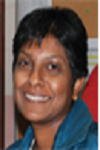
Biography:
Shyamala Doraisamy is an Associate Professor at the Department of Multimedia, Faculty of Computer Science and Information Technology, University Putra Malaysia (UPM). She received her PhD from Imperial College London in 2004, specializing in the field of Music Information Retrieval and currently heads the Digital Information Computation and Retrieval research group at UPM. Her research interest includes Multimedia Information Processing, focusing in particular on Audio Content Analysis and Applications for Music and Health Informatics. She is a committee member of the Malaysia Society of Information Retrieval and Knowledge Management (PECAMP) and the recent Tenth Asia Information Retrieval Societies (AIRS) conference.
Abstract:
With the current advancements in computing and multimedia technology, the information content for information processing is no longer confined to collections of text-based documents, but now consists of very diverse media such as images, video and audio. Various branches of media-specific information processing fields have now emerged due to the challenges specific to the characteristics of the various media data and the specialized domain knowledge required for developing modern-age and state-of-the art software applications. These typically employ Computational Intelligence techniques in combination with suitable Digital Signal Processing Algorithms. This talk will focus on the audio media and an overview of audio content analysis techniques will be presented towards automatic analysis and understanding of sounds. Several related projects in the domains of music and heart sounds will be discussed.
Tasos Dagiuklas
Hellenic Open University, Greece
Title: Research challenges for immersive video communication ecosystems over future internet
Time : 15:30-15:55

Biography:
Tasos Dagiuklas received the received the Engineering Degree from the University of Patras-Greece in 1989, the MSc from the University of Manchester-UK in 1991 and the PhD from the University of Essex-UK in 1995, all in Electrical Engineering. He is Assistant Professor at the School of Science and Technology at the Hellenic Open University, Greece. He is leading the Converged Networks and Services Research Group. He is Senior Member of IEEE, Chair for IEEE MMTC 3DIG WG, IEEE MMTC E-Board Member and Associate Technical Editor for IEEE Communications Magazine. He has served as Guest Editor in many scientific journals. His research interests include FTV, 3DTV, Media Optimization across heterogeneous networks, QoE and cloud infrastructures and services.
Abstract:
Recent advances in ICTs are seeing the boundaries between real and virtual worlds to fade towards a converged and unified environment, the so-called Future Media Ecosystem, which enables new forms of communication, thus fostering innovation, spearing job creation and gearing up competitiveness at regional and global levels. As a result of this on-going convergence, citizens are already witnessing profound transformations on the way they interact each other, as well as with various entities that constitute their living/working environments. Driving forces are the recent advances in multimedia technologies and social networks, supported by the widespread deployment of broadband infrastructures (e.g. LTE, 5G) and Cloud Computing facilities, along with a new breed of user-equipment that integrate communication and computation capabilities. All of them are rapidly transforming the environment(s) that citizens are surrounded by, as they introduce new kinds of interactions between humans and objects. Hence, in this evolving Future Media Ecosystem, it is normal for citizens to demand the kind of experiences that they are accustomed to in their daily/real lives, i.e., not only interact with only their own media in a “user-centric” approach, but be also able to form groups in an ad-hoc manner and share their experiences in a “community-centric” approach. Overall, a community-centric media ecosystem emerges as a cross-breeding of communications, multimedia, social network technologies, where citizens can create, share, or even trade their experiences, within different contexts and with maximum possible QoE (Quality of Experience).
Tsang-Ling Sheu
National Sun Yat-Sen University, Taiwan
Title: Emerging technologies for multimedia networks
Time : 15:55-16:20

Biography:
Tsang-Ling Sheu has received his PhD degree in Computer Engineering from the Department of Electrical and Computer Engineering, Penn State University, University Park, Pennsylvania, USA in 1989. He has worked with IBM Corporation at Research Triangle Park, North Carolina, USA (1989-1995). In 1995, he became an Associate Professor and was promoted to Full Professor in 2006 at the Department of Electrical Engineering, National Sun Yat-Sen University, Taiwan. His research interests include wireless networks, mobile communications and multimedia networking. He was the recipient of the 1990 IBM outstanding paper award and he is a Senior Member of the IEEE and the IEEE Communications Society.
Abstract:
There is a growing need for people to communicate with each other and have timely access to multimedia regardless of the location of the individuals or the information. Emerging technologies for multimedia networks (ETMN) pose an engineering challenge that can be met only with an efficient and reliable network. The demand for multimedia networks is increasing and its sophistication and ubiquity has led to the need for a better understanding of fundamental issues. The workshop of ETMN intends to provide a forum for researchers, educators and professionals to exchange their discoveries and practices and to explore future trends and applications. Your presentation at the workshops would be an excellent opportunity for you to meet colleagues and to discuss technology advancements. Possible topics of interests include but are not limited to Multimedia Protocols and Architectures, Multimedia on Mobile Communication Systems (4G/5G), Multimedia on MTM, Ad-hoc and Sensor Networks, Multimedia Vehicular Networks, Multimedia Network Performance, Analysis and Evaluation, Quality of Services (QoS) and Innovative Multimedia Networking and Applications.
Mohamed Abdur Rahman
Umm Al-Qura University, Kingdom of Saudi Arabia
Title: Massive multimedia crowd sourced environment for big data capturing, processing, storing and visualization
Time : 16:20-16:45
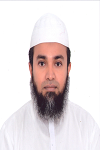
Biography:
Md Abdur Rahman is an A/Professor in the Department of Computer Science of Umm Al-Qura University, Makkah Al Mukarramah, KSA. Dr. Abdur Rahman received his Ph. D. degree in electrical and computer engineering from the University of Ottawa, Canada. His research interests include serious games, spatio-temporal databases, multimedia for e-Learning, multimedia for healthcare, Ambient assisted living, and context-aware multimedia systems. He has authored and co-authored more than 75 publications including refereed IEEE/ACM/Springer journals, conference papers, and book chapters. Dr. Abdur Rahman is a Member of IEEE and a member of ACM.
Abstract:
Smartphones equipped with varieties of sensors enable them in participatory and opportunistic crowd-sourced sensing. The built-in as well as external sensors paired with modern smartphones provide an ideal multimedia big data source, where a very large crowd can share audio, video, text, SMS, location, etc. In this talk, we will illustrate our proposed big data framework that has been storing multimedia data from a very large crowd since September 2014. Our framework uses Scale Free Network (SFN) to represent the dynamics of large crowd and produces visualization metrics by running spatio-temporal queries over the proposed multimedia big data framework.
Smart C Lubobya
University of Cape Town, South Africa
Title: Performance evaluation of hybrid Wi-MAX WI-FI video surveillance systems
Time : 16:45-17:10

Biography:
Smart C Lubobya received the BE degree in Electrical Engineering from the Copperbelt University, Zambia and the MSc degree in Electrical Engineering from University of Cape Town, South Africa. He has worked as Telecom Engineer for Zambia Telecommunication Company Ltd., Manager Research and Development for Zambia Communication and Technology Authority. He is a Research Fellow at the University of Zambia and currently a PhD candidate in Electrical Engineering at the University of Cape Town. His research interests include wireless communication, video compression and streaming, radio engineering and computer networking.
Abstract:
Traditional surveillance systems are mainly Closed Circuit Television (CCTV) type; mainly depends on analogue cameras, heavy wiring and are limited both in coverage distance, video quality and nature of terrain. Hybrid WiMAX-Wi-Fi video surveillance systems are proposed to mitigate the above constraints as either a complimentary or alternative to the CCTV. Notwithstanding the cost of WiMAX IP cameras, WiMAX has the advantages of wide coverage, guaranteed quality of services, high data rate among others. Wi-Fi has the advantage of providing connectivity to a wide range of customer devices, cheaper Wi-Fi cameras but has limited range. The advantages of WiMAX and Wi-Fi are being exploited to implement hybrid WiMAX-Wi-Fi video surveillance systems which can be deployed in developed and developing countries in order to minimise crime in bus and train station, airports, schools, stadia, organisations and other public places. Performance of such wireless systems are analysed and compared to the wired.
Alireza Akoushideh
University of Twente, Netherlands
Title: A New Approach to Improve the Throughput of the Texture Classification

Biography:
Alireza Akoushideh is currently a full time PhD candidate in Department of Electrical and Computer Engineering, University of Shahid-Beheshti, Tehran, Iran. He received the M.Sc. degree in Electrical engineering from Amirkabir University of Technology, Tehran, Iran in 2000. Starting from January 2015 Alireza has joined to the SCS group at the Twente University, Netherland as a visiting researcher and works in biometrics to investigate the use of texture classification with the aim of improving facial recognition. Mr. Akoushideh research interests are texture analysis and classification and he is working on "Extension of robust feature extraction operators to improve texture classification accuracy.
Abstract:
In this speech, we talk about features' value range (FR) approach to enhance the throughput of texture classification. The proposed approach is used as a pre-classifier with a simple construction. The FR approach selects a few categories as class candidates for an input image and reduces the comparison time of the main classifier. The proposed approach works based on gathering information from local areas. We define two configuration parameters and some criteria for evaluation of the FR approach in different configurations. We discuss about the performance of the FR in presence of different levels of Gaussian noise. Finally, we propose two approaches to improve the efficiency of the FR approach
Raoul R Nigmatullin
KNRTU-KAI, Russia
Title: A combined deterministic-statistical analysis of compressed multimedia streams

Biography:
Raoul R Nigmatullin has completed his PhD in 1974 year of Kazan State University and Doctorate thesis in 1992 year. Now he is working in the Kazan National Research Technical University (KNITU-KAI) as the full Professor in Radioelectronic and Information Measurements Technics Department. He is the author of more than 200 publications published in reputed journals and received more than 2020 citations. His Hirsch index achieved 21. His scientific interests are rather wide and related to fractal geometry, applied fractional calculus and development of new statistical methods related to analysis of different random sequences and complex signals.
Abstract:
The strong interest in the multimedia delivery in fixed and mobile networks has been testified over and over in the most recent years. Nevertheless, it is well known that video must be compressed before being transmitted over network channels, for bandwidth saving purposes. For this reason, a deep comprehension of the main compressed video characteristics is needed, especially by designers and engineers, to design, manage and evaluate the communication services and exploit at best the network resources. Usually, two different approaches are utilized to describe the main trends of multimedia data sets (in terms of long sequences of frame sizes): The deterministic and statistical approaches. Nevertheless, they are developed separately. The main novelty of this work is that these two different aspects are combined together, proposing two methodologies that contribute to characterize in deep detail the video data, under both the points of view. More specifically, the deterministic approach exploits of the Generalized Prony Spectrum (GPS) analysis. The trends of the data set are caught by a set of parameters that fully characterize the function. The statistical analysis is carried out by exploiting the scaling properties of the beta-distribution function. Also in this case, the video data set can be effectively reduced to a small set of parameters that statistically describe the data flow. To validate both the methods, a wide variety of video traces, both bi- and three-dimensional, is considered. Results found give an interesting and complete idea of the level of detail in the video traces description.
Ilju Seo
Secugraph, Inc., Korea
Title: Cylindrical coordinates security visualization for multiple domain command and control botnet detection

Biography:
Ilju Seo is a Founder and CEO at Secugraph, Inc., Seoul, Korea. He has an MS degree in Department of Computer Science and Engineering from Korea University in 2012, and a BS degree from Myongji University in 2010. His research interests include network, internet security and visualization for security.
Abstract:
The botnets are one of the most dangerous species of network-based attack. They cause severe network disruptions through massive coordinated attacks nowadays and the results of this disruption frequently cost enterprises large sums in financial losses. In this paper, we make an in-depth investigation on the issue of botnet detection and present a new security visualization tool for visualizing botnet behaviors on DNS traffic. The core mechanism is developed with the objective of enabling users to recognize security threats promptly and mitigate the damages by only visualizing DNS traffic in cylindrical coordinates. We compare our visualization method with the existing ones and the experimental results show that ours has greater perceptual efficiency. The ideas and results of this study will contribute towards designing an advanced visualization technique that offers better security. Also, the approach proposed in this study can be utilized to derive new and valuable insights in security aspects from the complex correlations of Big Data.
Marta Kruneva
Kingston University, London
Title: Advances in the area of high-quality interactive 3-dimentional visualizations

Biography:
Marta Kruneva is a Digital Media Lecturer at Kingston University. She teaches Computer Graphics and Animation to Games, CG and Animation BA/BSc and MA students. Her extensive work experience is the area of photorealistic and interactive 3D graphics. She completed a BSc in ‘Computer Science: Multimedia, Computer Graphics and Animation’ from New Bulgarian University (2010) and ‘3D Computer Graphics’ M.A. with Distinction from Kingston University (2013). Her research interests include photorealistic computer graphics, shading and look development, interactive 3D visualizations and virtual reality.
Abstract:
The interactive computer graphics have made astonishing progress in the recent years. The gap between the quality of the real-time CG and the off-line ray-traced graphics is narrowing due to the significant advances in the hardware and software technologies. Instead of relying on the expensive ray-traced CPU computations, the real-time graphics uses the Graphic Processing Unit to achieve high-quality results. Direct3D and OpenGL application programming interfaces already allow the computations of complex effects and high-quality rendering in real-time and the development of WebGL technologies promises interactive 3D content independent of a particular program. This talk will focus on the advances in the recent technologies used to produce high-quality real-time 3D-graphics, the applications of such interactive technologies and the potential future of the 3D computer graphics.
Pascal Lorenz
University of Haute-Alsace, France
Title: Multimedia communication protocols in sensors Ad hoc networks

Biography:
Pascal Lorenz received his MSc (1990) and PhD (1994) from the University of Nancy, France. Between 1990 and 1995 he was a Research Engineer at World FIP Europe and at Alcatel-Alsthom. He is a Professor at the University of Haute-Alsace, France, since 1995. His research interests include QoS, wireless networks and high-speed networks. He is the author/co-author of 3 books, 3 patents and 200 international publications in refereed journals and conferences. He was a Technical Editor of the IEEE Communications Magazine Editorial Board (2000-2006), Chair of Vertical Issues in Communication Systems Technical Committee Cluster (2008-2009), Chair of the Communications Systems Integration and Modeling Technical Committee (2003-2009) and Chair of the Communications Software Technical Committee (2008-2010). He has served as Co-Program Chair of IEEE WCNC'2012, ICC'2004 and ICC'2017, tutorial chair of VTC'2013 Spring and WCNC'2010, track chair of PIMRC'2012, symposium Co-Chair at Globecom 2011-2007, ICC 2010-2008 and ICC'2014. He has served as Co-Guest Editor for special issues of IEEE Communications Magazine, Networks Magazine, Wireless Communications Magazine, Telecommunications Systems and LNCS.
Abstract:
Ad hoc Sensor Network (ASNs) is distributed systems which consist of wireless mobile or static sensors. In order to communicate with each other, each mobile unit must act as a router and a terminal, and must retransmit packets from other mobile units. Due to their great flexibility of use, good robustness and very quick deployment, such networks can be used in many areas. The applications developed in such areas use especially multimedia and real-time data (images, video, etc.). ASN’s users would like to have the same services as those offered by wired networks. In other terms, the applications used in wired networks must be functional in ASNs, especially multimedia and real-time applications (video conferencing, internet telephony, video on demand etc.). The limited sizes of the sensors make complex, the support of such applications which require significant resources like the energy, bandwidth, delay, losses rate, jitter, QoS etc. Many factors, at different levels of the network (physical, MAC, routing and transport) reduce the performance of these networks. We then see appeared specificity of some protocols such as MAC, routing and transport with the support of multimedia applications and data.
Thomas. K.F Chiu
The University of Hong Kong, Hong Kong
Title: Design of multimedia external representation: Cognitive processing

Biography:
Thomas K F Chiu, formerly Oracle Trainer, is a Lecturer in the Faculty of Education at the University of Hong Kong. He has an MSc in Software Technology and PhD. He has published a number of papers in prestigious peer-reviewed journals and has served as editor and reviewer of several peer-reviewed journals of repute. He also provides consultation services for a number of educational technology developers on the development of digital learning materials for users of various cognitive capacities. He has designed and ran professional development programs on the use of technology. His research interests include external representation, multimedia learning, and cognitive science.
Abstract:
Multimedia resources can be categorized into technology, representation and sensory areas. Technology refers to devices which display resources; representation, to formats of external representation; and sensory, to sensory modalities through which resource data are received. In terms of representation, effectiveness is measured as a function of developing user understanding, and requires the integration of new messages from multimedia resources and current understanding. This involves different cognitive processes including: selecting, organizing and integrating. To successfully acquire new understanding, users need to select relevant multimedia messages presented in materials, then organize and integrate the selected messages. The design of external representations determines the level of engagement in different kinds of cognitive processing. We investigated design methods for multimedia external representations to maximize cognitive capacity and to more effectively engage cognitive processing. The data collected allowed us to define optimal design characteristics, which have useful practical implications for educational technology designers and educators, and can inform efforts to improve the design of digital multimedia materials. These characteristics may also assist multimedia designers to develop more intuitive and approachable interfaces that help users accept messages more effectively.
Mahmoud Afifi
Assiut University, Egypt
Title: Chroma-Keying: Usages, Challenges, and Future Directions

Biography:
Mahmoud Afifi received the B.S. degree in Information Technology in 2009 from Faculty of Computers and Information, Assiut University, Egypt. He is currently a M.S. student and a teacher assistant at the department of Information Technology, Assiut University, Egypt. In 2014 and 2015, he published 7 articles, four of them in international conferences and three of them in international journals. In addition, he is a 3D modeler and animator. His research interests include multimedia systems, digital actors, image processing, and computer vision.
Abstract:
Chroma-keying is a technique for separating objects from the original scene to be integrated in another scene. Usually, it is performed using a uniform colored background. By detecting the color of the background, the matte is generated. This matte is used as a mask that specifies which pixels are related to the interesting object and which pixels are related to the background. Chroma-keying is used in film industry for integrating actors with other background that may be real or virtual one. Actors are prohibited from wearing clothes that have colors that close to the uniform color of the background. Depth sensors, such as Microsoft Kinect, are used for determining the depth of objects in the scene. Many techniques were presented that use depth sensors for separating interesting objects form the original scene using their depth information. However, depth sensor's accuracy is still limited. Depth sensors can be used in addition to the image processing for removing chroma-keying's limitations and getting a better accuracy more than using a standalone depth sensor for separating objects from the scene.
Amjad Mahmood
Southwest Jiao Tong University, China
Title: Semi-supervised evolutionary ensembles for web video categorization
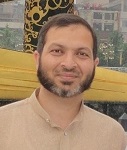
Biography:
Amjad Mahmood has completed his PhD from Southwest Jiaotong University, Chengdu, CHINA. He did his first master degree in Physics (1994), second in electronics (1995) and third in computer science (2005). He is the in-charge of software research and development group in a well reputed Govt. organization. He has been working there for the last 20 years. Previously he was heading the bio-informatics department of a public sector university. During his carrier he was involved in teaching as well as a variety of research and application projects related to industrial automation, software engineering and bio-informatics. Image processing has remained a priority research area of interest in his carrier.
Abstract:
In recent decades, with the substantial growth in internet, computer hardware, infrastructure and optics have revolutionized the digital universe. On social web, multimedia advancement in digital world has provided an easy path to produce abundant videos by its users. This abundance of videos has made the selection criteria quite complicated for a user to search and get the desired video. Automatic Web Video Categorization (WVC) is principally a procedure of assigning web videos to pre-defined categories (such as Sports, Autos & Vehicle, Animals, Education, etc.). The challenges started from abundant data diversity within a category, deficiency in precisely labeled training data and atrociousness of video quality that make the analysis of diverse Web videos a challenging task. A lot of research work has been carried out on this issue in a conventional way by utilizing visual, textual and audio features individually or with different combinations to train models for Web video classification. Due to inadequate results of high-level concept detection methods and expensive feature extraction, the content based categorization could not achieve the required results. Basic text oriented mining approaches are quite ineffective to well categorize the YouTube videos due to inadequate textual details, e.g., title, tag and description. Besides supervised learning (classification), where some amount of pre-labeled data is used for learning purposes, unsupervised learning (clustering) has a unique role in data mining research. Evolutionary Algorithms (EA) have been developing rapidly as a powerful and general learning approach which has been used successful in finding a reasonable solution for data mining and knowledge discovery. Genetic algorithm (GA) is a kind of mainstream EA paradigm with a purpose of developing solutions for optimization problems. Clustering ensembles have emerged as an outstanding algorithm in machine learning to leverage the consensus across multiple clustering solutions and combines their predictions into a single solution with improved robustness, stability and accuracy. In this research work, we propose a Semi-Supervised Evolutionary Ensemble (SS-EE) frame work for social media mining, e.g., Web Video Categorization (WVC), using their low cost textual features, intrinsic relations and extrinsic Web support.
Mingwen Tong
Central China Normal University, China
Title: A novel vision-based web page segmentation algorithm
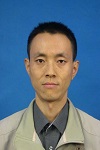
Biography:
Mingwen Tong has completed his PhD from Central China Normal University (CCNU). He is a Professor at CCNU. He has published more than 25 papers in reputed journals and has been serving as an Editorial Board Member of repute.
Abstract:
With the rapid development of microelectronics technology and mobile communication technology, mobile phone users have increased rapidly. However, mobile phone cannot present the content of web page designed for PC properly because of the limitations of mobile phone screen size and computing power. The contradictions have become increasingly prominent and sharp with the rapid growth of mobile phone users and the rapid development of mobile communication technology. For this problem, proposing vision-based webpage segmentation (VWS) technology, from the visual perspective of identifying characteristic of web content blocks (CBs) to addressing the problems of accurately and efficiently display Web pages in mobile browser and to improve the user experience. The novel technology innovatively describes the visual features of CBs from six dimensions; the weight for each dimension can be confirmed by Weights Direct Determination of Neural Networks which can determine value of weight by only one step, based on the human visual characteristics and innovatively regards web page segmentation as grouping optimization problem based on the optimization theory. Therefore, web page can be divided into subpages network which each sub-page suitable for mobile browser rendering and the semantic of it is complete and maximized. Quantitative analysis and qualitative analysis prove that VWS technology work well to solve the problem of web pages displayed in the phone rightly and has a better user experience.
Zhuoying Zeng
China Acadamy of Electronics and Information Technology, China
Title: A fast encoder of frame-compatible format based on content similarity for 3D distribution

Biography:
Zhuoying Zeng, received the B.S.degree in electrical engineering from Shanghai Jiao Tong University, China, in 2009 and the M.S degree in system LSI from graduate school of information, production and system,Waseda University, Japan and Shanghai Jiao Tong University at 2011 and 2013 respectively. She is currently an engineer in China Acadamy of Electronics and Information Technology.
Abstract:
Frame compatible format (FCF), which multiplexes the left and right eye views in to one frame spatially, has been considered as one of the most promising solutions for 3D video broadcasting. In this paper, a fast algorithm exploiting the content similarity is proposed to reduce the computational complexity for coding FCF. A low complexity average shift estimation method is proposed to find the matching blocks in the two inter leaved views, based on which mode candidate sets are designed for accelerating intra and interceding of the second inter leaved view (the inter leaved view at the bottom/right in FCF)by exploiting inter-view correlations. The proposed algorithm achieves an average of 72.45% reduction in Intra coding complexity and an average of 81.08% reduction in Inter coding complexity for the second inter leaved view, respectively, with negligible loss in compression efficiency. By combining with conventional fast algorithms, that is applying an conventional fast algorithm to code the view on the top/left and the proposed one to code the view on the bottom/right,the whole encoder provides up to 5.44 times higher encoding speed relative to applying the conventional algorithm solely to the whole frame with negligible performance degradation.

Biography:
Jongweon Kim received the Ph.D. degree from University of Seoul, major in signal processing in 1995. He is currently a professor of Dept. of Contents and Copyright and Chief of Creative Content Labs at Sangmyung University in Korea. He has a lot of practical experiences in the digital signal processing and copyright protection technology in the institutional, the industrial, and academic environments. His research interests are in the areas of copyright protection technology, digital rights management, digital watermarking, and digital forensic marking.
Abstract:
Impact of 3D printing technolgy in the manufactuaring industries is getting more powerful since the patents about 3D printer had been expired. As primitive 3D printing technology evolved into the fine printing technology from coarse technology and the printing materials are diversified, its scope of application range was extended from the biotechnology to the automobile industry and aerospace industry. In addtion, an ordinary person can print their own ideas by the low-cost 3D printer. Dissemination of accurate 3D scanners and 3D printers makes it easy for someone to steal other people’s designs and ideas. Plagiarism and theft on tangible media by a 3D printer raises the piracy issue on intellectual property. Therefore, copyright requirements will be investigated how to be defined for the protection of the work output by the 3D printer. The works should have a minimum of creativity to be protected by the copyright and should have investigate whether those works are based on original works. It is hard to interpret these criteria mechanically, but the determining similarity between original works and printed works can be supported technically. In this study, we want to be able to remove the impediments to the advance of the activation of the 3D printer industry by deriving the requirements for copyright protection of 3D printed works.
Abdellatief Hussein A Ali
Elshrook Academy School of Computer Science, Egypt
Title: Object-based VQ for image compression
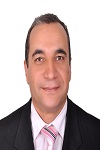
Biography:
Abdellatief Hussein A Ali received BSc from the MTC Cairo in computer engineering 1984, Presidential Honored, Master degree from Collage of Engineering from Cairo University in expert systems, and PhD from University of Alabama in Huntsville (UAH) USA, Dean Honored and Postdoctoral studies from the same school. He served in Egyptian air force R&D in different positions ended by Commander of a research center. During his service, he persuaded many of classified researches in area of computer based systems that have been mapped to working systems. He has over 25 article published in reputed journals and conferences. Fields of interests includes: image processing, software engineering, artificiali, multimedia, and neural networks. He is currently working for Shrook Academy, Shrook city, Cairo, Egypt.
Abstract:
Vector quantization, VQ, is the process of picking suitable set of representative vectors, code book, to an extremely larger set. The use of representatives or their indices was widely applied in communication and multimedia compression. VQ techniques, for example k-means, adapt the code book vectors location in space to minimize representative’s overall bin distortion. The VQ techniques treat boundary vectors contribution to distortion as any other point that leads to the possibility of forming clusters across the boundary of the classes or objects. The study highlights the possibility of having representatives that observe classes or objects boundaries. The code book generated is out of learning process to the classes or the connected regions. Consequently, the code book is not only effective in compression but also suitable for applications such as classifications and recognition. The proposed code book generation process is composed of three phases: initialization, iterative, and finalization. In the initialization, the min-max algorithm is used to pick the initial code book. The min-max algorithm enables the choice of the code book size based on ceiling to the expected distortion. In the second phase, adapted LBG iterates on the code book, starting with the initial, to learn classes or objects boundaries. The iterative process focuses on using the miss-represented points to attract the right representative and repels the current. In the finalization phase, code book point that does not contribute to correct decoding is dropped from consideration in the final code book.
- Multimedia Search and Retrieval
Multimedia Systems and Applications
Music, Speech and Audio Processing in Multimedia
Multimedia Networking
Advances in Multimedia Technology
Location: Salis-Well

Chair
Mohamed Abdur Rahman
Umm Al-Qura University, KSA

Co-Chair
Alex Lopes Pereira
Technological Institute of Aeronautics, Brazil
Session Introduction
Duraid Y. Mohammed
University of Salford, UK
Title: Audio Content Analysis in The Presence of Overlapped Classes - A Non-Exclusive Segmentation Approach to Mitigate Information Losses
Time : 11:25-11:50

Biography:
Duraid Y. Mohammed is a 2nd year Ph.D student at university of Salford/ School of Computing, Science and Engineering/ Acoustics research center. He has published 1 conference paper in Audio Engineering Society (AES) 136th and his second paper is accepted for published in IEEE journal.
Abstract:
Soundtracks of multimedia files are information rich, from which much content-related metadata can be extracted. There is a pressing demand for automated classification, identification and information mining of audio content. A segment of the audio soundtrack can be either speech, music, event sounds or a combination of them.There exist many individual algorithms for the recognition and analysis of speech, music or event sounds, allowing for embedded information to be retrieved in a semantic fashion. A systematic review shows that a universal system that is optimized to extract the maximum amount of information for further text mining and inference does not exist. Mainstream algorithms typically work with a single class of sound, e.g. speech, music or even sounds and classification methods are predominantly exclusive (detects one class at a time) and losing much of information when two or three classes are overlapped. A universal open architecture for audio content and scene analysis has been proposed by the authors. To mitigate information losses in overlapped content, non-exclusive segmentation approaches were adopted. This paper is presented from one possible implementation deploying the universal open architecture as a paradigm to show how the universal open architecture can integrate existing methods and workflow but maximize ex-tractable semantic information.In the current work, overlapped content is identified and segmented from carefully tailored feature spaces and a family of decision trees are used to generate a content score. Results show that the developed system, when compared with well established audio content analyzers, can identify and thus extract information from much more speech and music segments. The full paper will discuss the methods, detail the results and illustrate how the system works.
Panagiotis Petridis
Aston University, UK
Title: Transforming the adoption of product-service systems through innovations in applied gaming technologies
Time : 11:50-12:15

Biography:
Panagiotis Petridis is a senior Lecturer in Gamification at Aston Univerisity. He has spent his entire career working in the field of virtual reality, simulation and gaming. His interest is in how these technologies can be used to change people’s behaviours, to help them make decisions and learn about things through realistic simulated experiences. He has published more than 60 papers in reputed journals and conferences. He has worked on and managed a large number of funded research projects developing virtual realities for use across a range of industries such as cultural heritage, construction, manufacturing and housing.
Abstract:
Adding value to manufacturing through services or “servitization” is now one of the central pillars of the Government’s economic policy. Modern manufacturing is now seen as extending well beyond mere production, and that Product-Service Systems (PSS) are key to industrial success. Servitization concerns the process of manufacturers shifting from a focus on producing and selling tangible goods to service-based business models. Factors that drive adoption of servitization are financial, strategic (competitive advantage) and marketing. However, uptake is slow and active efforts are being made to transfer knowledge about servitization to the manufacturing sector. Serious games and gamification can provide a tools to transfer the knowledge of servitization to the manufacturing section. The use of digital games and gamification has demonstrable potential to improve many aspects of how businesses provide training to staff, operate, and communicate with consumers. However, a need still exists for the benefits and potential of adopting games and gamification be effectively communicated to decision-makers across sectors. This presentation provides a structured review of existing literature on the use of games in the business sector, seeking to consolidate findings to address research questions regarding their perception, proven efficacy, and identify key areas for future work. The findings consolidate evidence showing serious games can have a positive and valuable impact in multiple areas of a business, including training, decision-support, and consumer outreach. They also highlight the challenges and pitfalls of applying serious games and gamification principles within a business context, and discuss the implications of development and evaluation methodologies on the success of a game-based solution.
Tsang-Ling Sheu
National Sun Yat-Sen University, Taiwan
Title: An ARQ retransmission scheme for real-time video multicasting over mobile communication networks
Time : 12:15-12:40

Biography:
Tsang-Ling Sheu received the PhD degree in Computer Engineering from the Department of Electrical and Computer Engineering, Penn State University, University Park, Pennsylvania, USA, in 1989. From Sept. 1989 to July 1995, he worked with IBM Corporation at Research Triangle Park, North Carolina, USA. In Aug. 1995, he became an Associate Professor, and was promoted to full Professor in Jan. 2006 at the Dept. of Electrical Engineering, National Sun Yat-Sen University, Kaohsiung, Taiwan. His research interests include wireless networks, mobile communications, and multimedia networking. He was the recipient of the 1990 IBM outstanding paper award. He is a senior member of the IEEE, and the IEEE Communications Society.
Abstract:
Multicast is an effective mechanism to substantially save network bandwidth while transmitting real-time video streams in a wireless mobile communication network (such as 3G/4G). However, today it lacks of a packet retransmission scheme for real-time video multicasting in mobile communication networks. The last hop of a mobile communication network is defined as the hop between a base station (BS)/gateway and a mobile station (MS). Packet errors happen very easily in the last hop because wireless channels in a mobile communication network are error-prone. As a result, packet errors in the last hop may bring a critical deterioration of video quality at MS. Besides, an end-to-end retransmission scheme, such as TCP, cannot meet the strict delay constraints of a real-time video stream. Hence, in this paper, we propose a retransmission scheme to improve the quality of video multicasting in the last-hop of a mobile communication network. The proposed retransmission scheme requires MS in a multicast group to feedback ARQ (Automatic Repeated Request) messages to BS/Gateway. The proposed retransmission scheme is invoked under three considerations: the extra bandwidth cost for retransmitting the erroneous blocks, the retransmission delay, and the acceptable delay constraints at MS. NS-3 simulation is performed to demonstrate the superiority of the proposed retransmission scheme. From simulation, we reveal how well the retransmission scheme can reconstruct the quality of a multicast video stream at MS. Furthermore, the extra bandwidth cost for retransmitting erroneous blocks is investigated.
Zi-Tsan Chou
National Sun Yat-Sen University, Taiwan
Title: An opportunistic cooperative MAC protocol for cognitive vehicular networks
Time : 13:30-13:55

Biography:
Zi-Tsan Chou received the PhD degree in computer science and information engineering from National Taiwan University, Taipei, Taiwan, in 2003. He is currently an associate professor at the Department of Electrical Engineering, National Sun Yat-Sen University, Kaohsiung, Taiwan. His industrial experience includes NEC Research Institute, America, and the Institute for Information Industry, Taiwan. His research interests include medium access control, power management, and quality-of-service control for wireless networks. He is a member of both the IEEE and the IEEE Communications Society.
Abstract:
In this paper, we can consider an application scenario in cognitive vehicular networks: Under the condition that different vehicles in different locations may have different set of available licensed channels, how do the vehicles (called potential relays) that correctly received data from the gateway choose the proper channel to concurrently relay the data to the vehicles (called potential destinations) that did not receive data from the gateway such that the network throughput can be maximized. We call this problem the interference-free multi-channel poly-matching (IMP) problem. To the best of our knowledge, this paper is the first one to seriously address this issue. The contributions of this paper are three-fold: (i) We use the integer mathematical programming to formally model the IMP problem, which is NP-complete. (2) We design a simple centralized greedy algorithm to efficiently solve this problem. (3) On the basis of our centralized greedy algorithm, we design a novel distributed medium access control protocol, named opportunistic cooperative MAC (OC-MAC for short), such that only via local information exchange between vehicles, the number of potential destinations that finally receive data from potential relays can be maximized. Simulation results show that the throughput of OC-MAC is approximately equal to that of centralized greedy algorithm and is greatly higher than that of Random MAC.
Mohamed Abdur Rahman
Umm Al-Qura University, Kingdom of Saudi Arabia
Title: Multimedia Big Data Environment for e-Therapy
Time : 13:55-14:20

Biography:
Md Abdur Rahman is an A/Professor in the Department of Computer Science of Umm Al-Qura University, Makkah Al Mukarramah, KSA. Dr. Abdur Rahman received his Ph. D. degree in electrical and computer engineering from the University of Ottawa, Canada. His research interests include serious games, spatio-temporal databases, multimedia for e-Learning, multimedia for healthcare, Ambient assisted living, and context-aware multimedia systems. He has authored and co-authored more than 75 publications including refereed IEEE/ACM/Springer journals, conference papers, and book chapters. Dr. Abdur Rahman is a Member of IEEE and a member of ACM.
Abstract:
Due to the low cost and high availability of wearable health sensors and motion tracking devices, home based therapy monitoring has come to a reality. In this paper, we propose a gesture controlled e-therapy online framework that can monitor physical and occupational therapy exercises using multimedia data produced by different sensors such as Kinect2, Leap, and Myo. The multimedia therapeutic data is then stored in a big data repository with proper annotation. We have developed analytics to mine therapeutic information from the big data platform such as finding the most appropriate therapy regime for a patient based on her age, ethnicity, gender, disability level and geo-spatial location. We will show different key queries that can be answered by our developed analytics.
Alex Lopes Pereira
Technological Institute of Aeronautics, Sao Jose dos Campos, Brazil
Title: Patch-based local histograms and contour estimation for static foreground classification
Time : 14:20-14:45
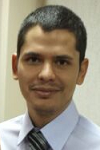
Biography:
Alex Pereira is a Computer Engineer who started his career as a tech entrepreneur. He co-founded a company (www.monity.com.br) that developed technology for video surveillance just after obtaining his undergraduate degree from the Brazilian Technological Institute of Aeronautics. Currently Alex works in research and development at the Brazilian Ministry of Defense. Alex received his Master's Degree in Electronic and Computer Engineering in 2008 and received his Doctor of Science degree in 2015. His main research interest are Image and Video Processing, Embedded Systems, Linux and Machine Learning
Abstract:
This speech is about an approach to classify static foreground blobs in surveillance scenarios. Possible application is the detection of abandoned and removed objects. In order to classify the blobs we developed two novel features based on the assumption that the neighborhood of a removed object is fairly continuous. In other words, there is a continuity, in the input frame, ranging from inside the corresponding blob contour to its surrounding region. Conversely, it is usual to find a discontinuity, i.e. edges, surrounding an abandoned object. We combined he two features to provide a reliable classification. In the first feature, we use several local histograms as a measure of similarity instead of previous attempts that used a single one. In the second, we developed an innovative method to quantify the ratio of the blob contour that corresponds to actual edges in the input image. A representative set of experiments shows that the proposed approach can outperform other equivalent techniques published recently.
Kuang-Hui Chi
National Yunlin University of Science and Technology, Taiwan
Title: Inhomogeneous wireless network load distribution
Time : 14:45-15:10

Biography:
Kuang-Hui Chi is Associate Professor at the Department of Electrical Engineering, National Yunlin University of Science and Technology, Taiwan. His current research interest lies in Wireless Internet.
Abstract:
Network inhomogeneity appears common as devices of different capabilities were phased in over time. As a result, households and enterprises may deploy IEEE 802.11n access points (APs) with joint use of earlier IEEE 802.11 b/g apparatus. When different generations of APs co-exist, varying coverage, capabilities, and service rates affect how a wireless station selects which AP to associate with and thus govern overall system performance. Meanwhile, in view that Android smartphones are becoming popular, we are concerned with distributing traffic among APs for wireless users, implementing the mechanism over Android under inhomogeneous network settings. In our architecture, three generations of standard APs are deployed within the same area where a server is introduced to collect user’s grade points or other relevant information. We propose a grading point system as the basis of load distribution, allowing for how long an Android handset used each type of AP in the past. Such connection time is considered plus and minus, respectively, with respect to an IEEE 802.11b AP and IEEE 802.11n AP. That is, the longer a handset was associated with an IEEE 802.11b AP, the more points it gains, in favor of its eligibility to connect to an IEEE 802.11n AP later. On the contrary, the longer the handset was with an IEEE 802.11n AP, the more advantage it loses, making it less likely to use the IEEE 802.11n again in the future. According to the ranking of our grade points, the appropriate AP is designated for users to camp in. Consequently, the inhomogeneous network is shown to maintain high functionality, producing high throughput as well as alleviating the loading from newer AP, so as to achieve load sharing across APs.
Zuriati Ahmad Zukarnain
University Putra Malaysia, Malaysia
Title: QKD communication protocol for authentication mechanism of cloud network
Time : 15:10-15:30
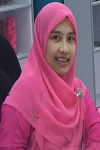
Biography:
Zuriati Ahmad Zukarnain is an associate professor at the Faculty of Computer Science and information Technology, University Putra Malaysia. She is the head for high performance computing section at Institute for Mathematics and Research (INSPEM), University Putra Malaysia. She received her PhD from the University of Bradford, UK. Her research interests include: Efficient multiparty QKD protocol for classical network and cloud, load balancing in the wireless ad hoc network, quantum processor unit for quantum computer, Authentication Time of IEEE 802.15.4 with Multiple-key Protocol, Intra-domain Mobility Handling Scheme for Wireless Networks, Efficiency and Fairness for new AIMD Algorithms and A Kernel model to improve the computation speedup and workload performance. Se has published more than 100 papers in reputed journals and has been actively involved as a member of the editorial board for some international peer-reviewed and cited journals. She is currently undertaking some national funded projects on QKD protocol for cloud environment as well as routing and load balancing in the wireless ad hoc network.
Abstract:
Quantum Key Distribution (QKD) protocol is a unique communication protocol for Authentication Mechanism of Cloud Network in replacing the key distribution technique based on public key infrastructure to achieve unconditional security in cloud. Cloud infrastructure provides many benefits in terms of low cost and accessibility of data. Ensuring the security aspect is a major factor in the cloud infrastructure. Currently, there are certain issues pertaining on Public Key Infrastructure (PKI) in cloud systems. It is obviously shown, there is no sufficient secured procedure to move private keys between clouds client. At the same time, there is no certificate authority separation thus it is not provide a secure authentication and authorization of cloud network. This QKD protocol is believed to be able to detect any eavesdropping activities and provide an effective security. The Quantum Key Distribution (QKD) protocol used the concept of Multiparty QKD (MQKD) which allow the same key is distributed to different parties based on quantum mechanism. A quantum key server generates a secret key that may strengthen the security aspects. A quantum key distribution key scheme is imposed in the cloud network to secure the top-secret message or information and capture the eavesdropper. The existence of quantum key storage between the cloud provider and cloud client may guarantee the integrity of communication process that ensure the party is authenticated and the communication cannot be intercept. To achieve the practical feasibility and simplicity in MQKD, a standard cryptographic like authentication scheme is designed. The simulation results show that our proposed protocol provides authentication of the clients is acceptable response to error rate and time. In addition, our result shows that the proposed scheme could reduce amount of information leak.
Ogunlade Benjamin Ande
Ladoke Akintola University Of Technology, Nigeria
Title: Multimedia Communication: It’s Implications on General Education
Time : 15:30-16:00

Biography:
An Associate Professor of Graphics and Communication Design with the Department of Fine and Applied Arts Ladoke Akintola University Of Technology Ogbomosho, Oyo State Nigeria. holds B. A. Graphic Design, M. A. (Industrial Design) Graphics, Ph.D (Industrial Design) Graphics from Ahmadu Bello University, Zaria. Was Head of Department from 2007 -2009. Serve in various committees at both academic and administrative level in the University. Also supervise a large number of undergraduate and post graduate graphic design students in and outside the University. Member to relevant Professional Bodies: Association of African Industrial Designers (AAID), Society of Nigerian Artists, (SNA) and Advertising Practitioner Council of Nigeria (APCON). Attended and presented papers at many symposia and conferences both national and international with over thirty- five publications in reputable journals (both local and international). Serve as an editorial board member of repute and also an external examiner to various tertiary institutions 2006 till date.
Abstract:
With rapid development of digital technologies building on an efficient and reliable multimedia, a lot of progress has been made from both application and design in resolving the challenges for the enhancement of learning and teaching through a blending of classic techniques. However, by extending beyond the boundaries of science, art and culture, multimedia communication also provides new paradigms and methods for searching through myriad variety of media all over the world. Hence, this paper review the past research in an attempt to provide for the proper understanding of multimedia as one of the most effective tool for advancing knowledge and skills. It also attempt to identify some of the factors that might increase the efficiency of multimedia instructional tools for teaching and learning based on cognitive theory of instructional process. The factors to be examined are ; level of coordination between information and channel in terms of layout design; nature of information to determine the sensory channel; and abilities for multimedia presentations.
Amr A Al Khuffash
3A Technologies Inc, UK
Title: The Need of Deep Learning Methods to Have Better Image Classification: Survey

Biography:
Amr has completed his MSc in computer science from the New York Institute of Technology in 2007, and his BSc also in CS in 1998. From 2000 to 2009 he was working at LEAD Technologies, Inc. Now he is an independent researcher in Computer Vision and Machine Learning.
Abstract:
As digital images and multimedia in general are making now a vast share of available data, a need for solutions of management is growing as well. And one of the essintial management tasks that is demanded by images’ management users, is to have a solution to what have been for long termed as Symantec Gap. Which really describes the lack of any system to the ability to use the same level of abstracution of concepts that we humans use –assuming that we have a basic unified abstraction of what we see, and that languages can describe it simply-. A ternd within the research community of this field is to use deep learning methods to analyse images’ contents and use this analysis as a base of images indexing and retrieval. A servey of such methods’ classes, with discussion of present and future challenges.
Pascal Lorenz
University of Haute-Alsace, France
Title: Multimedia communication protocols in sensors Ad hoc networks

Biography:
Pascal Lorenz received his MSc (1990) and PhD (1994) from the University of Nancy, France. Between 1990 and 1995 he was a Research Engineer at World FIP Europe and at Alcatel-Alsthom. He is a Professor at the University of Haute-Alsace, France, since 1995. His research interests include QoS, wireless networks and high-speed networks. He is the author/co-author of 3 books, 3 patents and 200 international publications in refereed journals and conferences. He was a Technical Editor of the IEEE Communications Magazine Editorial Board (2000-2006), Chair of Vertical Issues in Communication Systems Technical Committee Cluster (2008-2009), Chair of the Communications Systems Integration and Modeling Technical Committee (2003-2009) and Chair of the Communications Software Technical Committee (2008-2010). He has served as Co-Program Chair of IEEE WCNC'2012, ICC'2004 and ICC'2017, tutorial chair of VTC'2013 Spring and WCNC'2010, track chair of PIMRC'2012, symposium Co-Chair at Globecom 2011-2007, ICC 2010-2008 and ICC'2014. He has served as Co-Guest Editor for special issues of IEEE Communications Magazine, Networks Magazine, Wireless Communications Magazine, Telecommunications Systems and LNCS.
Abstract:
Ad hoc Sensor Network (ASNs) is distributed systems which consist of wireless mobile or static sensors. In order to communicate with each other, each mobile unit must act as a router and a terminal, and must retransmit packets from other mobile units. Due to their great flexibility of use, good robustness and very quick deployment, such networks can be used in many areas. The applications developed in such areas use especially multimedia and real-time data (images, video, etc.). ASN’s users would like to have the same services as those offered by wired networks. In other terms, the applications used in wired networks must be functional in ASNs, especially multimedia and real-time applications (video conferencing, internet telephony, video on demand etc.). The limited sizes of the sensors make complex, the support of such applications which require significant resources like the energy, bandwidth, delay, losses rate, jitter, QoS etc. Many factors, at different levels of the network (physical, MAC, routing and transport) reduce the performance of these networks. We then see appeared specificity of some protocols such as MAC, routing and transport with the support of multimedia applications and data.
Fatos Salliu
European University of Tirana, Albania
Title: Impact of the Internet and digital technology in the information society in Albania

Biography:
Fatos Salliu is a PhD candidate in Communication Science in Albania. He is a Lecturer of "Rhetoric" and "Introduction to Media" at the "Alexander Xhuvani" University and a Journalist at ABC News. He is a member of the research group at the Faculty of Social Sciences at the European University of Tirana on the topic: "The transformation of the political culture of democracy: From propaganda to public relations". He has long professional experience in traditional platforms and many national newspapers in Albania. He is an author of opinions, analyzes and comments on the Albanian press.
Abstract:
The development of the internet and digital technology has brought revolution in the mass media in Albania. Albania has been a very isolated because of the dictatorial system. The country inherited blizzard deep in information technology. Over the last 25 years Albania has seen development in every direction. Since June 2014, it is an official candidate for EU membership. But to be accepted into the European family, it must reach certain standards. Currently new world order is in the stage of information society. This society can’t be understood without the Internet, digital technology, WiFi, mobile technology and mass media. EU countries are in the forefront of this development. With efforts, Albania is still behind in the process. However, mobile services and digital communications platforms, the country is approaching European standards. This study aims to reveal how has affected the internet and digital technology in the information society. The methodology was based on the level of Internet penetration for number of residents and number of households. Extension of fixed and mobile telephony. The market of mass media and electronic services index. All these were compared with EU standards. Data analysis shows the real situation of the impact of the Internet and digital technology in informing the population in Albania. The research presents accurate scientific conclusions and makes recommendations for the future in this field.
Raoul R Nigmatullin
KNRTU-KAI, Russia
Title: The generalized multi-dimensional platform for data array classification

Biography:
Raoul R Nigmatullin has completed his PhD in 1974 year of Kazan State University and Doctorate thesis in 1992 year. Now he is working in the Kazan National Research Technical University (KNITU-KAI) as the full Professor in Radioelectronic and Information Measurements Technics Department. He is the author of more than 200 publications published in reputed journals and received more than 2020 citations. His Hirsch index achieved 21. His scientific interests are rather wide and related to fractal geometry, applied fractional calculus and development of new statistical methods related to analysis of different random sequences and complex signals.
Abstract:
The author wants to pay an attention of many researches on the papers where new principles of description of random signals are formulated. The problem can be formulated as follows: Is it possible to find a regression curve of many random signals if their probability distribution function (PDF) is not known? This problem can be solved if we replace a priori supposition about PDF by some principles that can be tested and justified. All these new methods can be unified under acronym – NIMRAD- Non-Invasive Methods of the Reduced Analysis of Data. We should mark some basic references related to the NIMRAD in order to stress its applicability to a wide circle of problems that can be solved by new methods associated with quantitative description of random signals and sequences. 1. NAFASS – non-orthogonal amplitude-frequency analysis of the smoothed signals. 2. The reduced fractal model (RFM) that can be applied for quantitative description of different blow-like signals. 3. Detection of quasi-periodic processes that are described in terms of Prony decomposition. 4. FERMA (The fractional exponential reduced moments’ analysis) of random sequences that generalizes the conventional data description based on the total spectrum of the fractional moments. 5. The statistics of the fractional moments and definition of the complete correlation factor based on the generalized Pearson correlation function. These new methods can be applicable for quantitative description of different multimedia signals without a priori and specific model suppositions accepted in the conventional mathematical statistics.
Betul Altas
Cag University, Turkey
Title: Multimodal Presentation of Literary Works in a Multimedia Environment A Case Study

Biography:
Betul Altas completed her B.A from Basket University in 2002 and MA from Çağ University, English Language Teaching – 2013 and ongoing Ph.D at Çağ University, English Language Teaching. Her research interests are Drama in Elt, English language teaching, Text Linguistics, Languages and Linguistics, Multimodality and second language learning, Cognitive Processing of Multimedia Learning, Cognitive Architectures, Met language, learning, Ethnography in education, Digital Literacies, Multimodality, New literacy studies, Digital Media, Education, Cultural Studies, Cognition, Multimedia Learning, Multimodal learning, Transfer of Knowledge, and Learning Experience
Abstract:
The purpose of this study is to both document the response of a selected group of students to the audio-visual presentation of literary works and identify the key elements of students' learning experience in a multimedia environment. Information questions prior to multimodal presentations of stage plays were used to identify participants' familiarity with literature, culture and language level. At the end of the presentation of the four stage plays, where classroom observations were also considered, the post-observation interviews were conducted. Data collected from the post observation interviews were compared with the data obtained from the information questions. The main results of the study substantiated the view that students' learning experience is enhanced through the study of stage play literature in a multimedia environment.
Qi Kang
Nankai University, China
Title: The Use of Mobile Social Media WeChat by Academic Libraries in China: Changes over the Years 2013–2015
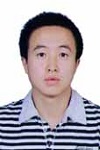
Biography:
Qi Kang is a librarian of Library Technology Center at Inner Mongolia University of Science and Technology. He is interested in how new technologies can be used to enhance the library user experience. He is presently a PH.D. Candidate in the Department of Information Resource Management at Nankai University. His research mainly focuses on two areas: (1) Sustainability of digital libraries, how digital information service can reduce greenhouse gas emissions and achieve economic/social/environmental sustainability; (2) Emerging social media and technologies and libraries. He has published more than 11 papers in reputed journals, including The Journal of Academic Librarianship.
Abstract:
This paper discusses the possibilities for using mobile social media WeChat in promoting academic library services and collections and describes the changes that occurred between 2013 and 2015. The results of an analysis of the top 116 academic libraries in China for the occurrence of WeChat elements and social media activity are presented. The main uses of WeChat are general social networking services (SNSs) and automatic answering and interaction features, which include seeking and sharing information, user self-service, and keyword-identified reference auto-responders. It also shows the dynamics of change in terms of how libraries use WeChat services. This comparative study shows that over the 2 years studied the number of libraries using social media increased, as did the variety of tools and the frequency of their use. We observed that most libraries had already improved and added many functions as comprehensively utilize WeChat’s capabilities. The findings indicated that the libraries had already incorporated social media tools into their services. The experience of Chinese university libraries is used to provide recommendations for other libraries.
